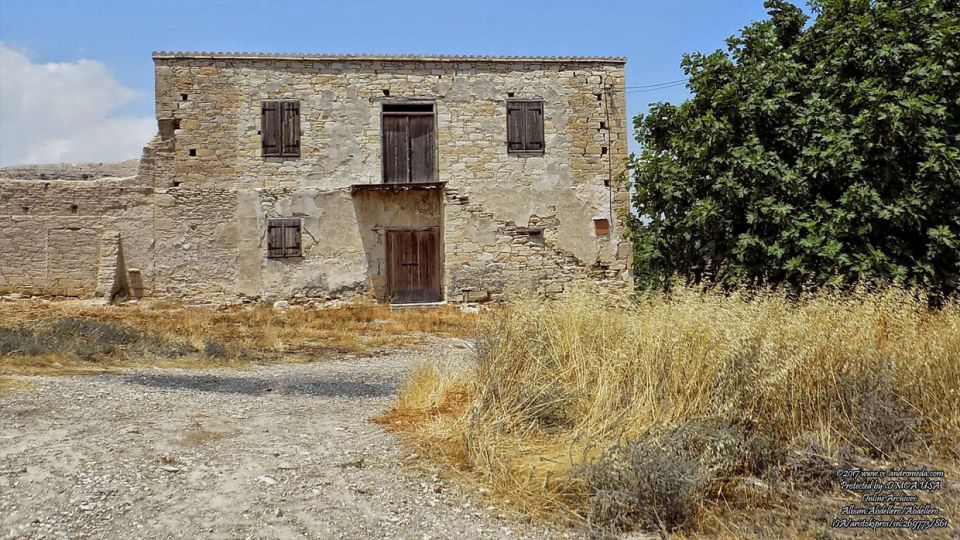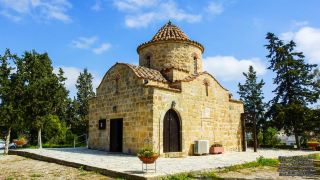Avdellero is a village belonging to the district of Larnaca and is found between the municipalities of Aradippou (5 kilometres) and Athienou (7 kilometres). Currently it has 250 permanent residents. This number increases continuously since families with economic difficulties sell their lands at very low prices.
Once this village only had 30 residents and it has now transformed into a modern community. There are roads with pavements, parks and squares and houses following the characteristic architectural style of Mesaoria decorating the village.
It is a style of architecture that tends to disappear from the lowlands of Cyprus. Rarely will you ever find this kind of architecture in our villages. The few houses left in Avdellero have to be protected and conserved.
There are two types of houses: two-storey and single-storey houses
The two-storey houses had very high surrounding walls and a patio on the inside, where they had an appropriately configured space, where they kept their flocks. They had a unique entrance that ended in the patio and rooms were built all around it. A storage place for straw was necessary in every home. It had a high roof and it only had a door and a trapdoor on the roof. People with a movable staircase, loaded with big sacks with straw, climbed on the roof of the barn and emptied the straw into the room through the trapdoor. When the barn was filled, they sealed the trapdoor with clay.
In another corner of the yard, you would find the oven of the house. whose dimensions were according to the family members living in the house.
The area where the animals were found, was also the area where they milked them.
All of this was surrounded by very high walls with a height of up to three metres, that had a triangular finish on which pieces of broken glass was placed, or bush branches with thorns. The reason was that they were put there to protect their animals from thieves and oxen that could jump over very high walls to get their prey.
The access to the upper floor was from a stair that was found on the outside of the rooms, in the area of the patio. It was often made up of wood and guided you to a balcony. The upper floor had the main bedroom of the house and this is where the “heads” of the family slept.
External windows were only found on the upper floor, while on the ground level you would find windows opening towards the patio.
The foundations of the construction were made of stone at a metre high. The rest was built of plinth that the owners of the house made on their own out of sand and straw. On the roof they placed round beams and they would crochet reeds on top. They would put clay on top of the reeds and on the clay they placed square marble. The same thing was carried out on the upper floor, except that they would put tiles instead of marble in the end. These houses were built of plinth 45x45 centimetres, they were anti-seismic and they offered warmth in the winter and coolness in the summer.
Lowland houses were single-storey houses built in the same way without the upper level. In Avdellero you will find many churches. Its main church is the Holy Church of Panagia Aimatousa, found in the centre of the village, next to the community park. In addition, you will also find the Holy Water of Panagia Aimatousa, as well as the Holy Monastery Metamorfoseos (of Transformation).
Each visitor that will visit Avdellero has a lot to see and a lot to learn, even if they are not interested in churches and monasteries, a walk along the village will offer them unique images.
A part of the European path that has a length of 30 kilometres begins from Avdellero and ends up in Panagia Stazousa belonging to the village of Pyrga, Nicosia.




